

The High Priestess card was born in 15th century Italy, within a deeply Christian society. Contrary to what one might think today, this female figure wearing papal attributes was not scandalous to contemporaries. It was part of a long medieval artistic tradition where the Church was often represented as a woman.
The first Tarot creators drew from the religious imagery of their time. The woman crowned with the papal tiara symbolized the universal Church, spiritual mother of the faithful. This allegorical representation was as natural as Justice with her scales or Strength with her lion.
The original High Priestess therefore embodies the wisdom of the religious institution, guardian of sacred texts and mysteries of faith. Her open book testifies to her teaching mission, while her papal attributes confirm her spiritual authority.
In the Middle Ages and Renaissance, representing the Church as a woman was a common and respected practice. St. Peter's Basilica in the Vatican still houses today a marble statue showing a woman wearing the papal crown and holding a book with keys. This work, located at the very heart of Catholicism, proves that the image of a "female pope" was not heretical.
This tradition is rooted in the vision of the Church as spiritual mother. Just as Justice is a woman holding scales, the Church becomes a woman holding the keys of salvation and books of divine wisdom.
Alongside this allegorical tradition, the legend of Pope Joan has circulated since the 11th century. This story, born in Cologne, Germany, tells that an English woman disguised herself as a man to study. Having become famous for her learning, she would have been elected Pope in the 9th century. Her true identity would have been revealed during a public childbirth during a religious procession.
This legend was considered authentic in the Middle Ages and Renaissance. It may explain why some have seen in the Tarot card a reference to this controversial figure. However, representations of Pope Joan in medieval art are generally explicit and dramatic, showing childbirth or a baby. The High Priestess of the Tarot, serene and dignified, seems rather inspired by the traditional allegory of the Church.
The sumptuous Visconti-Sforza tarot, created around 1450 for the Duke and Duchess of Milan, may hide a family secret. Some historians think that the High Priestess of this deck represents Maifreda da Pirovano, a relative of the Visconti burned for heresy in 1300.
It all begins in the 1260s with the arrival in Milan of a mysterious woman named Guglielma. Accompanied by a young son, she presents herself as a widow, but no one knows her origins. After her death in 1282, her tomb becomes a pilgrimage site where miracles occur.
Sister Maifreda, member of the religious order of the Umiliati and cousin of the Visconti family, then develops a bold belief. With priest Andrea Saramita, she proclaims that Guglielma was the feminine incarnation of the Holy Spirit. This revolutionary idea foresees that a woman could lead the Church.
In 1300, the Inquisition intervenes. Maifreda and her accomplices are burned alive. Ten years later, when the Church investigates the Visconti family for heresy, it carefully recalls that the famous heretic Maifreda was indeed a cousin of this powerful lineage.
Historian Gertrude Moakley first proposed this identification between the Visconti-Sforza High Priestess and Maifreda. Her main argument: the card's costume would resemble the habit of the Umiliati. However, careful examination reveals that the High Priestess actually wears the brown habit of the Franciscan Poor Clares, with its characteristic knotted cord, and not the simple white habit of the Umiliati.
This difference opens another fascinating hypothesis. A legend had circulated in Lombardy since the early 14th century: Guglielma would actually be Vilemina, daughter of the king and queen of Bohemia. Now, the real Vilemina had a younger sister who became Saint Agnes after founding an order of Poor Clares in Prague with the help of Saint Clare of Assisi.
Did the Duchess of Milan know this legend? Representing Saint Agnes rather than the heretic Maifreda would have allowed discreetly honoring Guglielma's memory while avoiding any reproach of heresy. This hypothesis remains appealing, even if it remains unverifiable.
Among the symbols of the papacy, there are the two keys inherited from Saint Peter, considered the first pope, to whom Jesus had entrusted the keys of the Kingdom of Heaven. The golden key is a reference to power over the kingdom of heaven, the silver key indicates the spiritual authority of the papacy on earth. The first images of the High Priestess on the Tarot represented her with a key, sign of her papal function.
Jean Noblet represents the High Priestess with her tiara cut off, indeed we only see 2 of the 3 crowns of the headdress. Previous versions all showed the tiara in its entirety. There is therefore a clear intention by Jean Noblet to signify a message through this particularity. We have two options:
Because the previous card, the Magician himself has a truncated table with 3 legs out of 4. I think that Noblet's message here is to signify that the knowledge of the High Priestess is incomplete. And that is precisely why she has an open book before her eyes: to learn. Thus Noblet's High Priestess, who does not have her key, and who therefore no longer has her full power over the kingdom of men, is a symbol of searching for truth and inner knowledge, not to say spiritual. Just like the Magician, the High Priestess is becoming.
Jean Dodal has exactly the same approach as Noblet, because he also truncates the High Priestess's tiara. There was a shared intention between the two master craftsman, or even a common vision of the entire corporation, to show the High Priestess as an incomplete character. However Jean Dodal adds an unexpected detail: a beauty mark (or a 'Beauty spot') on the cheek. Noblet and Dodal were not afraid, they both had a freedom of thought and expression of their opinion, quite remarkable for the time. The High Priestess with a beauty mark reminds us that the character remains nonetheless a woman, who can be beautiful and even seductive. We can love her for that too. A spiritual woman is probably not an unreachable woman, a woman without desire, or an immaculate woman.
Another very interesting aspect of Dodal's version, he calls the card "La pances", which could be translated as:
Personally, I think it is more about the first option, unless the master craftsman wanted to play on both words.
Subsequently, we will notice that the message of these master craftsman is lost. Indeed the popular Conver tarot of 1762 shows a complete high priestess with the 3 visible crowns of her tiara. Then on the Grimaud tarot engraved by Paul Marteau in 1930, you can notice (image from the introduction) that the High Priestess has her tiara overflowing onto the upper cartouche. This detail probably wants to signify that the High Priestess has superhuman or divine wisdom or power. We understand well that the initial message is totally distorted.
The tarot of Besançon is a tarot derived from the Marseille that appeared in eastern France. It is quite early in the history of French tradition tarot that the cards of the High Priestess and the Pope were replaced by less "blasphemous" characters because the figure of the Pope offended Protestants, and the figure of the High Priestess was offensive to Catholics.
Juno is the most important Roman goddess. She is queen of the gods, protector of women and symbol of marriage. Needless to say that with this figure, the second trump had lost all its initial meaning.
The replacement of the High Priestess is not limited to Besançon. This transformation reveals the religious tensions of the modern era. Contrary to a widespread idea, the Catholic Church did not oppose religious figures on playing cards. It was Protestant regions that refused Catholic imagery.
In Belgium and northern France, the High Priestess becomes the Spanish Captain, a character from Italian comedy. This substitution completely transforms the meaning of the card: gone is spiritual wisdom, replaced by the boastful and ridiculous character of popular theater.
In Bologna, the situation is different. In 1725, the Pope's representative in this city decreed that the Empress, the Emperor, the Pope and the High Priestess must be replaced by four Moors in all Tarot decks. This local political decision creates the Tarocco Bolognese, where Christian hierarchy disappears in favor of exotic figures.
These replacements show how much the High Priestess had become troublesome. Religious symbol for some, scandalous figure for others, she gradually loses her place in certain regions. Fortunately, the Marseille Tarot preserves her original image and allows her transmission to us.
At the end of the 18th century, the High Priestess underwent a radical transformation. Scholars passionate about esotericism decided that the Tarot hides secrets much older than medieval Christianity. This intellectual revolution would completely change the face of our card.
Antoine Court de Gébelin, Protestant pastor and amateur of antiquities, published in 1781 a revolutionary theory in his work "The Primitive World". According to him, the Tarot would be a picture book preserving the wisdom of ancient Egypt. Christian symbols would only be late deformations masking the true origin of the deck.
Court de Gébelin therefore renames the Papess as "High Priestess". For him, this card represents an Egyptian priestess married to the High Priest (the former Pope). This idea of the sacred Egyptian couple definitively replaces the Christian allegory of the Church.
Although his illustration remains close to the Marseille Tarot, Court de Gébelin claims that the High Priestess wears the horns of Isis. This interpretation opens the way to all future transformations of the card.
The true architect of the modern High Priestess is Éliphas Lévi, whose real name was Alphonse Louis Constant. This former seminarian turned occultist described in 1856, in "Dogma and Ritual of High Magic", a precise vision of the card that would influence all later creators.
According to Lévi, the High Priestess is "a woman crowned with a tiara, wearing the horns of the Moon and of Isis, her head wrapped in a cloak, the solar cross on her chest, and holding a book on her knees which she conceals with her cloak."
Lévi associates this card with the second Hebrew letter, Beth, which means "house". This correspondence transforms the High Priestess into guardian of the inner sanctuary, seated at the entrance to the temple of hidden wisdom. She thus becomes the holder of Gnosis, this direct knowledge of the divine reserved for initiates.
Oswald Wirth, disciple of Lévi, created in 1887 then revised at the beginning of the 20th century a Tarot that materializes these ideas. His High Priestess sits enthroned on a sculpted sphinx, symbol of mysteries to be solved. She holds a half-open book, keeping a finger between the pages as if marking her place in eternal reading.
Wirth multiplies the symbols of duality: red and green columns, gold and silver keys, crescent moon on the tiara. He even adds a yin-yang symbol on the book, bold mixture between Western and Eastern traditions. For him, the High Priestess embodies "the priestess of mystery, Isis, the goddess of deep night, without whose help the human spirit could not penetrate the darkness."
The Hermetic Order of the Golden Dawn, British secret society founded in 1888, systematizes these correspondences. They name the card "Priestess of the Silver Star" and definitively associate it with the Moon, the Water element and everything that fluctuates and remains partially hidden.
In their system, the card corresponds to the Hebrew letter Gimel (the camel), animal that allows crossing the desert thanks to its water reserves. This metaphor suggests that the High Priestess helps cross spiritual trials thanks to her inner wisdom.
The High Priestess card of the Rider-Waite-Smith Tarot is undoubtedly one of the most esoteric of the deck along with the Wheel of Fortune. The mind map below proposes an interpretation of the esoteric aspects of the card. We will also note that the character takes on a lunar dimension which I discuss at the end of this article. In any case, with this card, the second Trump is more associated with divine wisdom and esoteric knowledge. It represents the connection with the spiritual world and access to hidden secrets.
Arthur Edward Waite and Pamela Colman Smith, both former members of the Golden Dawn, created in 1909 the most influential High Priestess of the 20th century. Their card faithfully follows Éliphas Lévi's vision while adding remarkable symbolic richness.
The High Priestess wears on her head the horns of Isis representing the three phases of the Moon: crescent, full moon and waning moon. On her chest shines a cross with equal branches, symbol of balanced dualities: masculine/feminine, conscious/unconscious, material/spiritual.
Instead of the traditional book, she holds a scroll marked "TORA" (Torah), emphasizing the dimension of sacred and hidden knowledge. This partially concealed parchment suggests that certain teachings can only be revealed to people ready to receive them.
The black and white columns framing the High Priestess bear the letters "B" and "J", for Boaz and Jachin, the legendary pillars of Solomon's Temple in Jerusalem. This biblical reference reinforces the idea that the card guards the entrance to the most sacred sanctuary.
The curtain embroidered with pomegranates and palm trees hides the Holy of Holies, the most secret place of the temple. The High Priestess stands exactly at the border between the visible world and the invisible world, between ordinary knowledge and initiatic wisdom.
In his book "The Pictorial Key to the Tarot", Waite cannot stop praising this card. He calls it in turn the Secret Church, the Shekinah (feminine divine presence in the Kabbalah), the spiritual bride, the supernatural mother, the daughter of the stars. For him, "in some respects, it is the highest and holiest of the major arcana."
The divinatory meanings that Waite proposes reflect this mystical vision: secrets, mystery, wisdom, silence, unrevealed future, and woman of importance in the consultation. The High Priestess thus becomes the perfect embodiment of feminine spirituality and intuitive knowledge.
Bruno de Nys' tarot is a modern Marseille Tarot, revised and completed. Some details like the keys, the tiara, the relatively masculine face of the character are not to my preference. However, I find the setting very interesting. Seeing the high priestess framed by two columns, almost secluded in her library, perfectly emphasizes the inner search dimension of the card. The sun rays that pass through the two skylights to illuminate the face, evoke the idea that the outer dimension and concrete experience of life comes to illuminate and develop our wisdom, our inner life.
I like in this card the evocation of the dichotomy in which women live: They must remain beautiful and seductive, while they remain serious and professional at work, while they are devoted to taking care of their children, while they manage their home and take care of house maintenance. The High Priestess parading before men's eyes can evoke this paradox of the modern Western woman. The character's body hair can also show her freedom of thought and action as an eminently spiritual woman. But it must be said that this aspect is common to all female characters in this tarot, so in the end the "right to body hair" is perhaps emptied of its meaning here.
With the Mad House tarot, we perhaps have a less provocative approach than the Exotic Cancer Tarot regarding the evocation of the femininity of the most spiritual character in the tarot. Here, the High Priestess reveals her nudity sparingly. She shows a voluptuous body far from the skeletal canons of beauty (which fortunately are now being questioned). This body is perhaps that of a pregnant woman, recalling the notion of gestation inherent in this card. The woman only reveals herself partially, denoting both true modesty (without provocation) and also mystery, the unknown remaining to be discovered and elucidated. Because to journey toward truth and inner knowledge, one must see oneself as one is, naked as on the first day.
The High Priestess taking her bath in relatively opaque water, brings me back to the idea of a character diving into the mystery and depths of her being. This practically unfathomable water can evoke the character's unconscious, her emotional interiority, since it is the Water element of course. In her introspection, the High Priestess undoubtedly evokes, through the search for self-knowledge, the development of her emotions. And at the end of the Fool's journey, particularly with the cards of The Tower, The Star and The Moon, emotional intelligence is paramount.
Perhaps more directly and clearly than the Tarot Del Fuego does with its multiple eyes, the eye on the High Priestess's forehead symbolizes the 3rd eye. This eye speaks of the awareness process, of self-knowledge. Even if this symbol comes from Eastern cultures, far from the Judeo-Christian tradition of the Marseille Tarot, it is still very relevant to carry the fundamental aspects of the High Priestess.
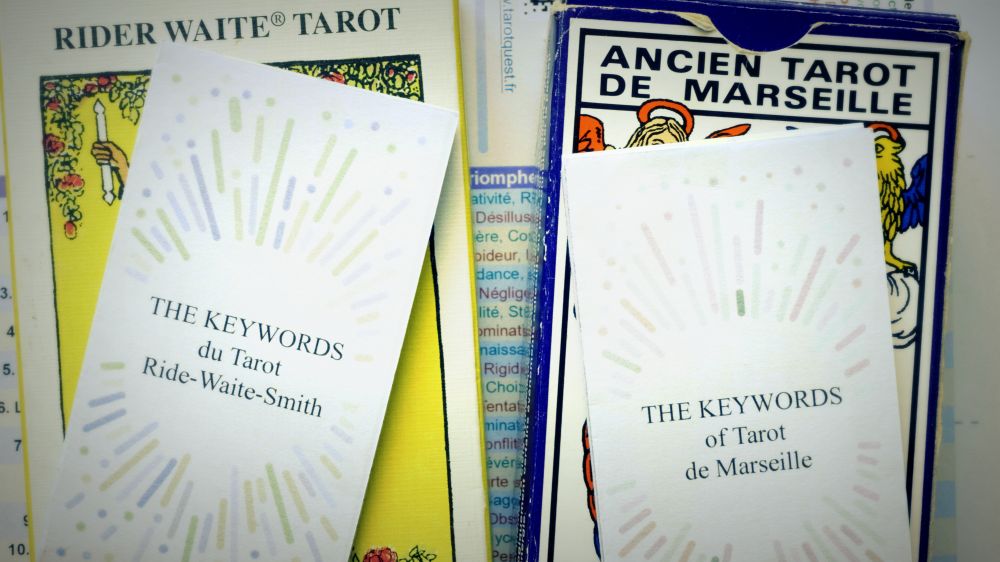
Key words for the 78 cards for the Tarot of Marseille and the Rider-Waite-Smith, to slip into your favorite deck. Your leaflets always with you, at hand, to guide you in your readings. Thanks to them, your interpretations gain in richness and subtlety.
As soon as we talk about interiority, people quickly make the association with the Moon. Which makes sense of course. But the lunar star is a symbol that is certainly powerful, but also catch-all, used for everything. I am not convinced of its use through the High Priestess card, for several reasons.
First, if the High Priestess becomes a lunar card. What becomes of the Moon card? What will be its scope, its symbolic dimension? In the use of a divinatory tool, it is important that the interpretation domains of the cards do not overlap. Indeed, we must avoid expressing the same symbolic aspects through cards that are nevertheless different, at the risk of providing nebulous interpretations. An essential aspect of learning tarot is being able to isolate the meaning of each card in a unique way. This approach allows gaining precision and clarity, even if I admit, it is demanding. Waite cheerfully mixes symbols of very different origins, the whole forming a cloud of truths conveying no clear, precise and synthetic message.
The High Priestess is above all a card of introspection, research, gestation. She is a character listening to her feelings, which is different from intuition. The High Priestess knows how to read between the lines of the text before her eyes. But here we are talking about lucidity based on intellectual understanding, reasoning. Intuition is immediate knowledge that goes beyond logic and reason. Intuition is a talent that is developed much later during the Fool's journey, at the time of the Moon stage precisely. Dodal names this card "la pances" probably meaning "thought". So it is indeed intellectual capacities that are evoked here.
Finally the Torah is a book of transmission, teaching, law, revelation. The High Priestess's book is "Her" book, it contains her own identity, which she must become aware of. The stakes are not the same. Even if I must admit that it is quite possible that the High Priestess also learns the rules of the world around her and in which she is preparing to journey. This book could also be a book of laws.
| Symbolic interpretation | Right direction (Positive) | Interiority, penetration, fertility, gestation, unconsciousness, faith, purity, initiation | Reverse direction (Negative) | Dissumulation, sterility, reserve, inertia, blocking, inhibition, hidden truth, mystery, silence |
| Psychological interpretation | Right direction (Positive) | Studious, thoughtful, discreet, careful, modest, innocent, believing | Reverse direction (Negative) | Introverted, solitary, irrational, impatient |
| Advice | |
| Be patient to learn more. Study rules and standards. Penetrate, understand the mysteries and mechanisms of the world. Temper your desires. Listen to your inner voice. Plan and organize your project. Wait for the right moment and the right opportunity. Recharge your batteries ! | |
| Thematic Interpretation | Love | First emotions or inner doubts. Friendship turning into love. Incipient or secret love. Deep and/or unrevealed feelings. Assumed or thwarted celibacy. Awkward shyness | Work | Maturing ambition. Training or job search. Dissemination in professional circles. Unrealistic planning. Confidential mission. Enthusiasm for work. Long studies | Money | Etude de marché ou d'investissements. Analyse comptable. Argent dissimulé ou bloqué en banque. Réserve d'argent. Foi ou perte de confiance en les marchés financiers | Family / Friendships | Reflecting on family ties. Learning about social norms. Faith or loss of faith in one's family. Family secrets. News to come. Writing to your family | Health | Pregnant. Decline in fitness. Incubation of an illness. Unconscious work or blockage. Multiple and/or clairvoyant dreams. Inner introspection |
| Divination / Prediction | Who ? | A grandmother. An elderly woman. A spiritual woman. An isolated or single person | Where ? | An enclosed or isolated place. A library. A place of retreat or learning. A monastery | When ? | An upcoming event or birth. A period of training or apprenticeship. A spiritual retreat | How ? | By reflecting or meditating. By studying or training. By listening to your feelings. By dreaming. By writing |
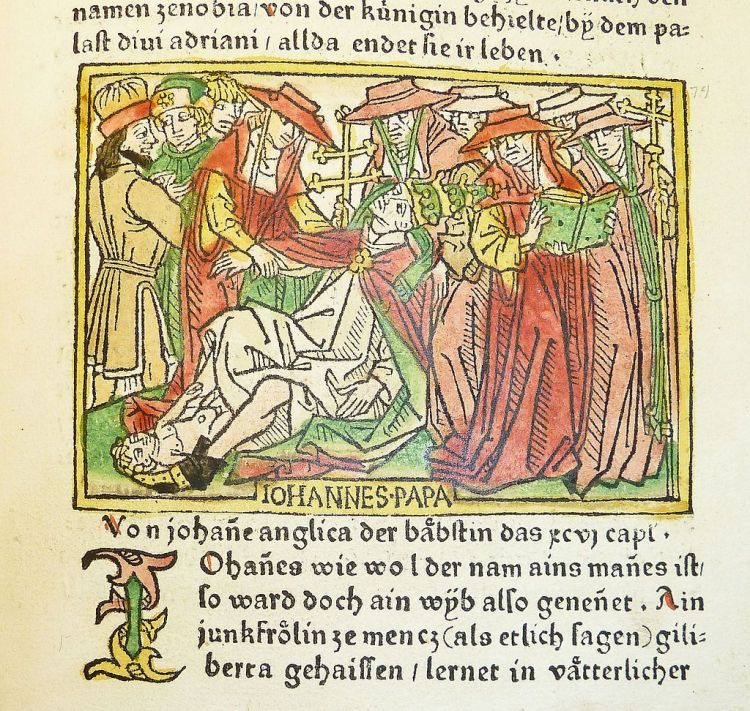
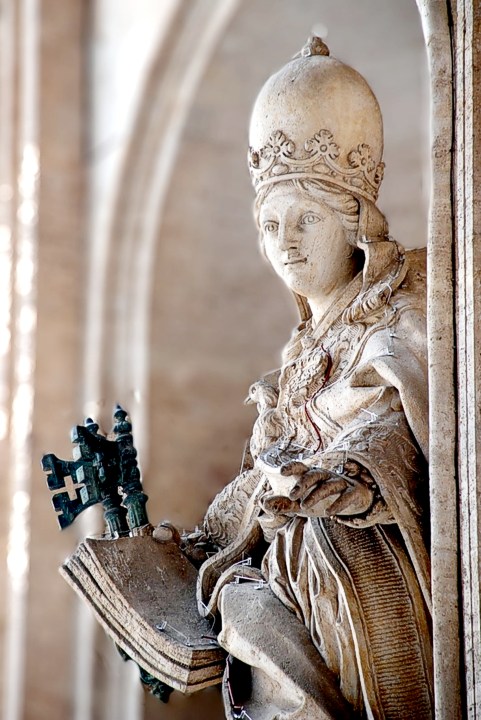
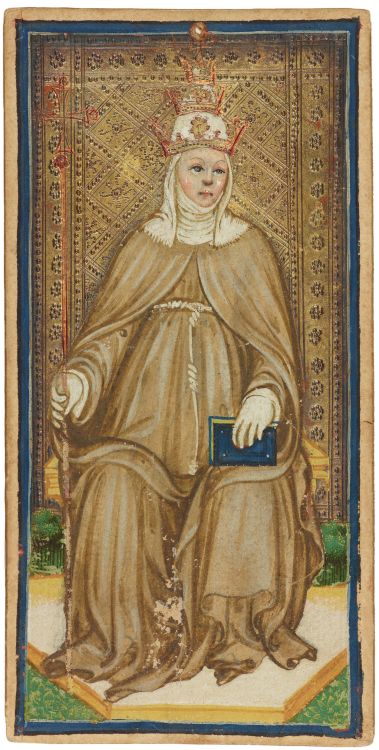
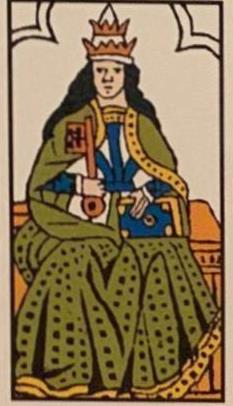
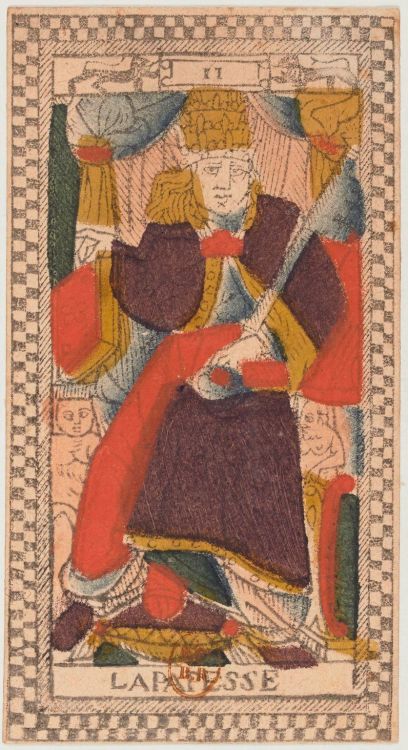
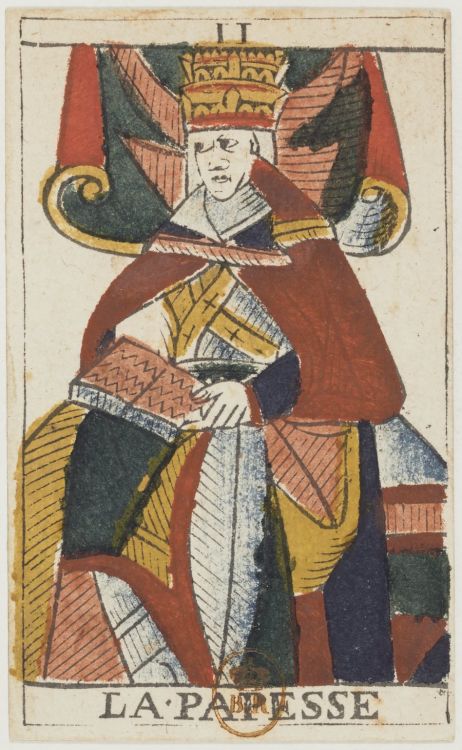
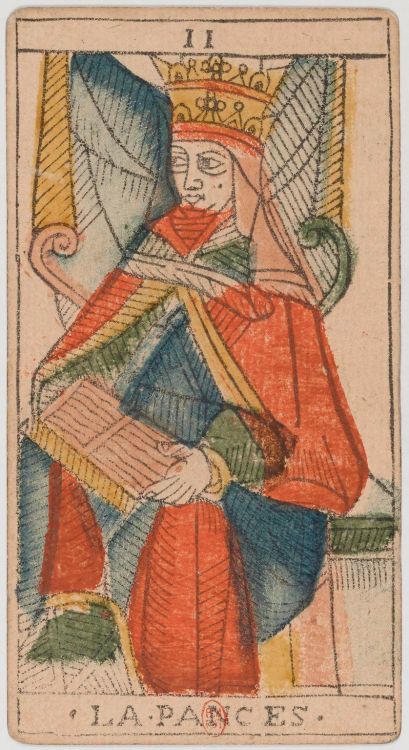
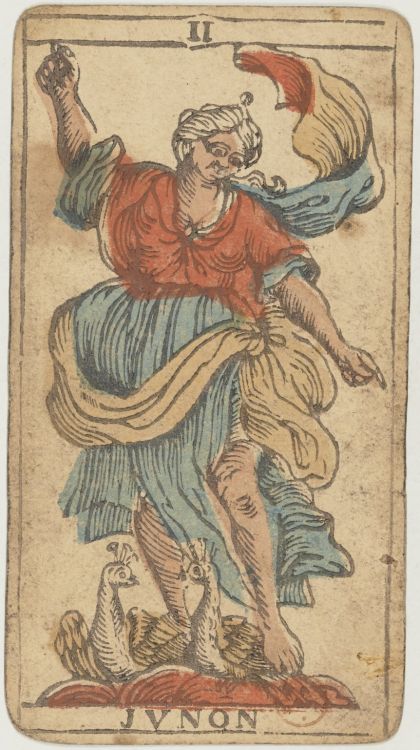
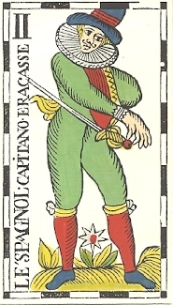


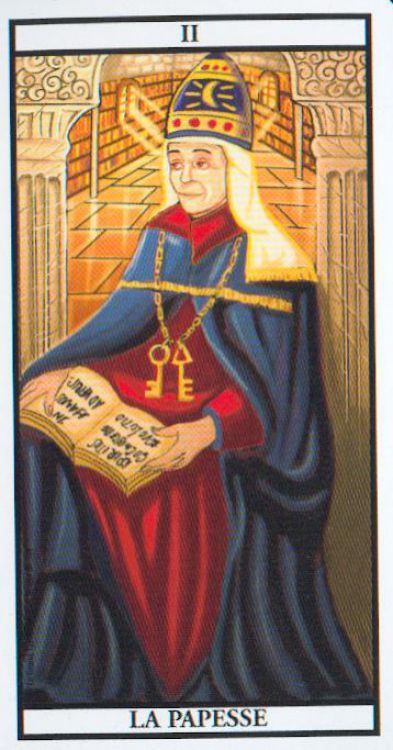
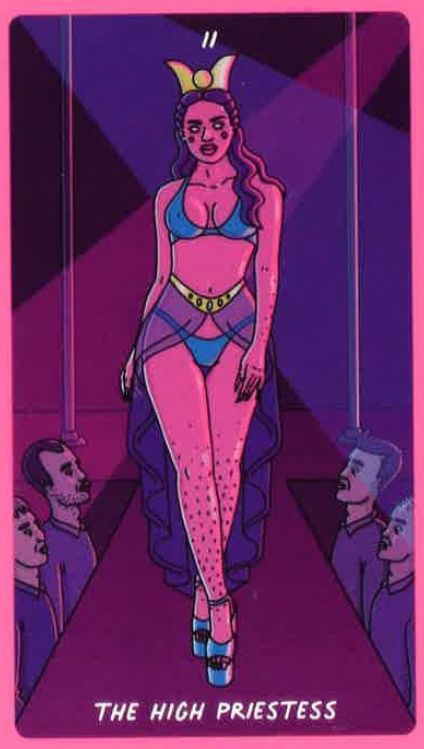
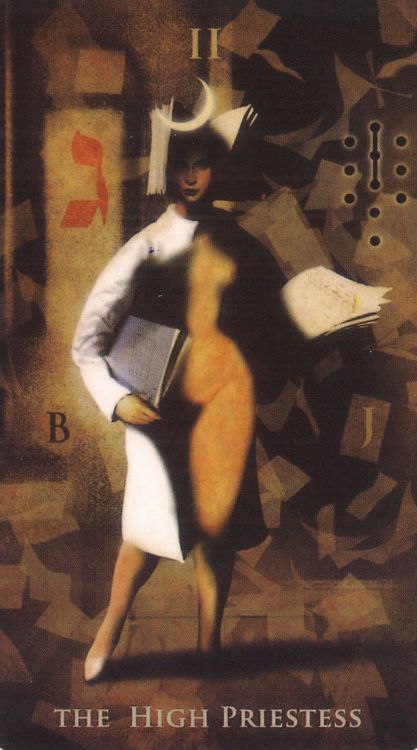
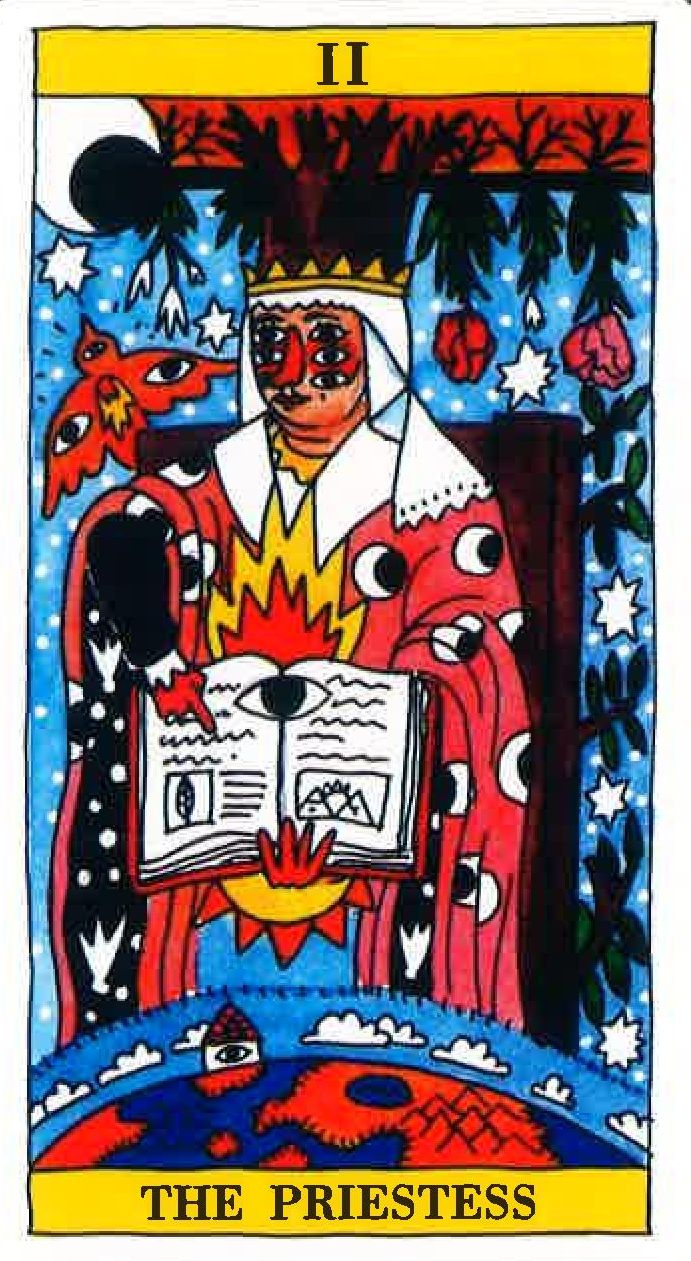
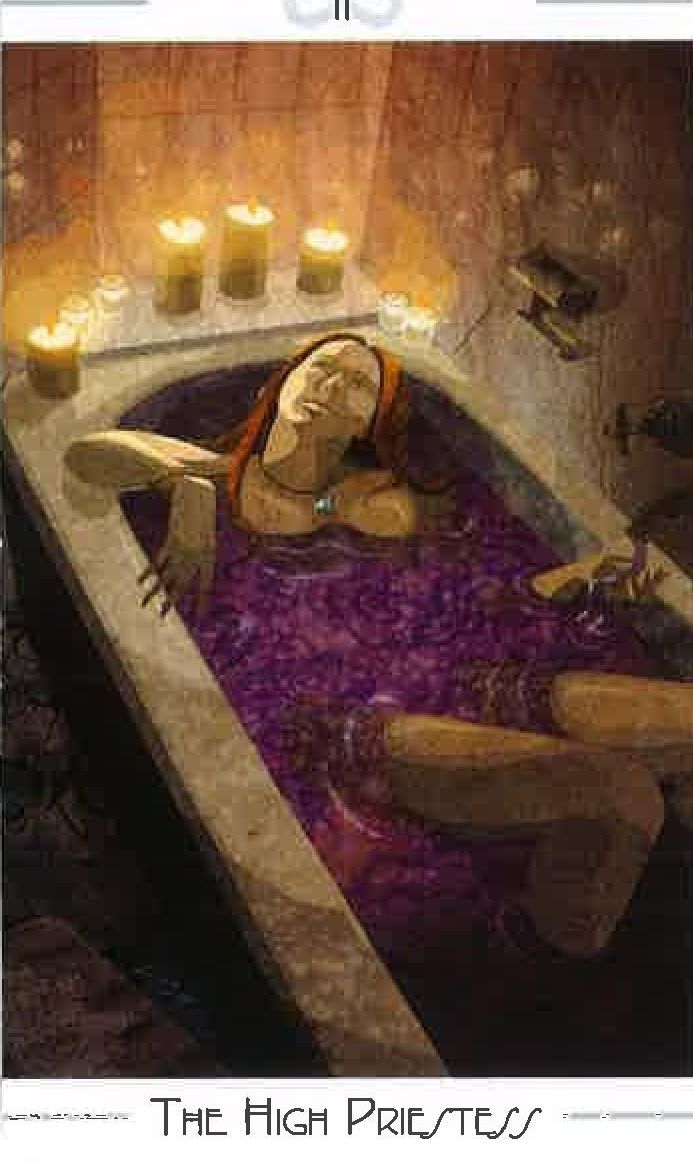
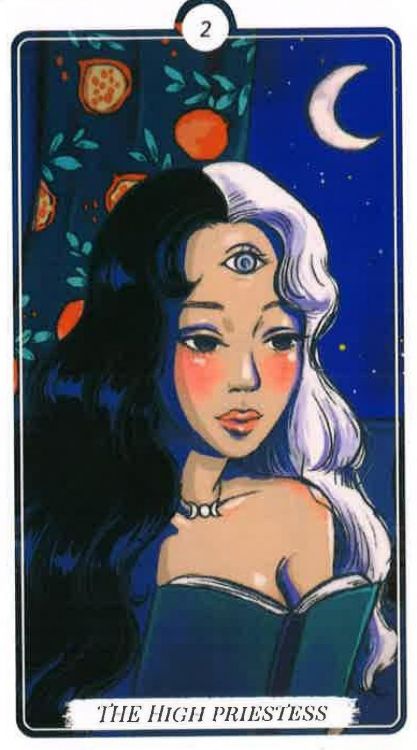
Copyright © TarotQuest.fr